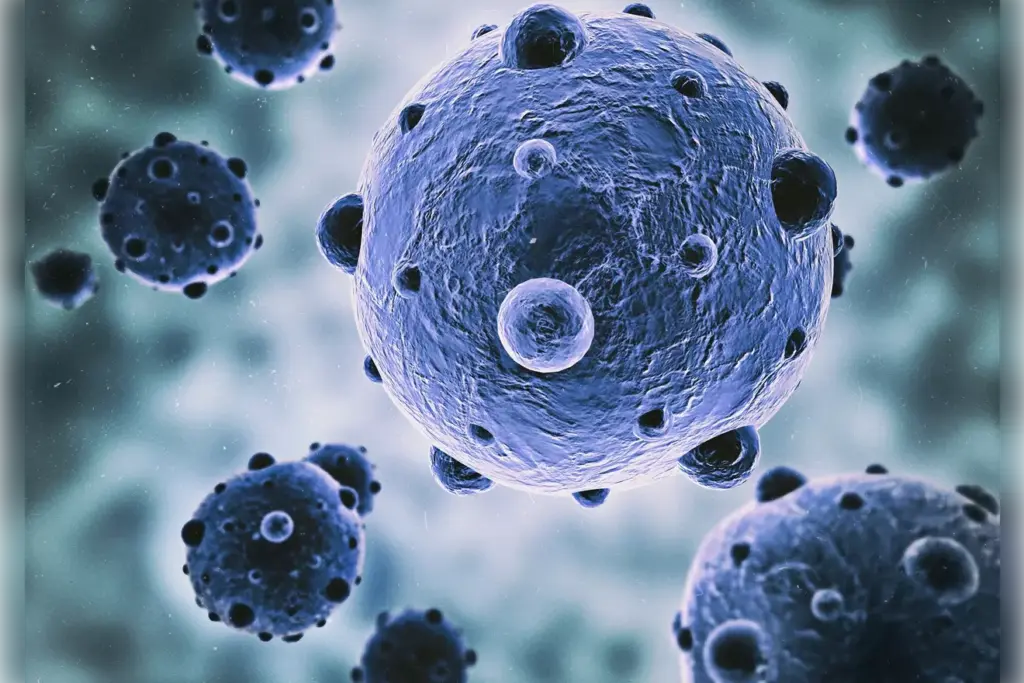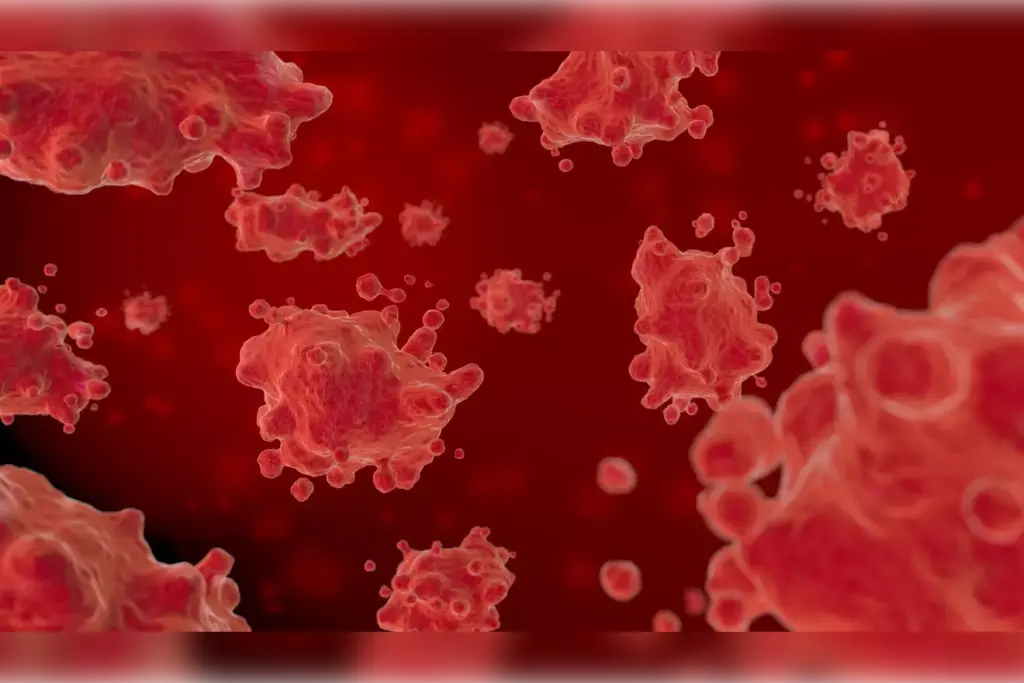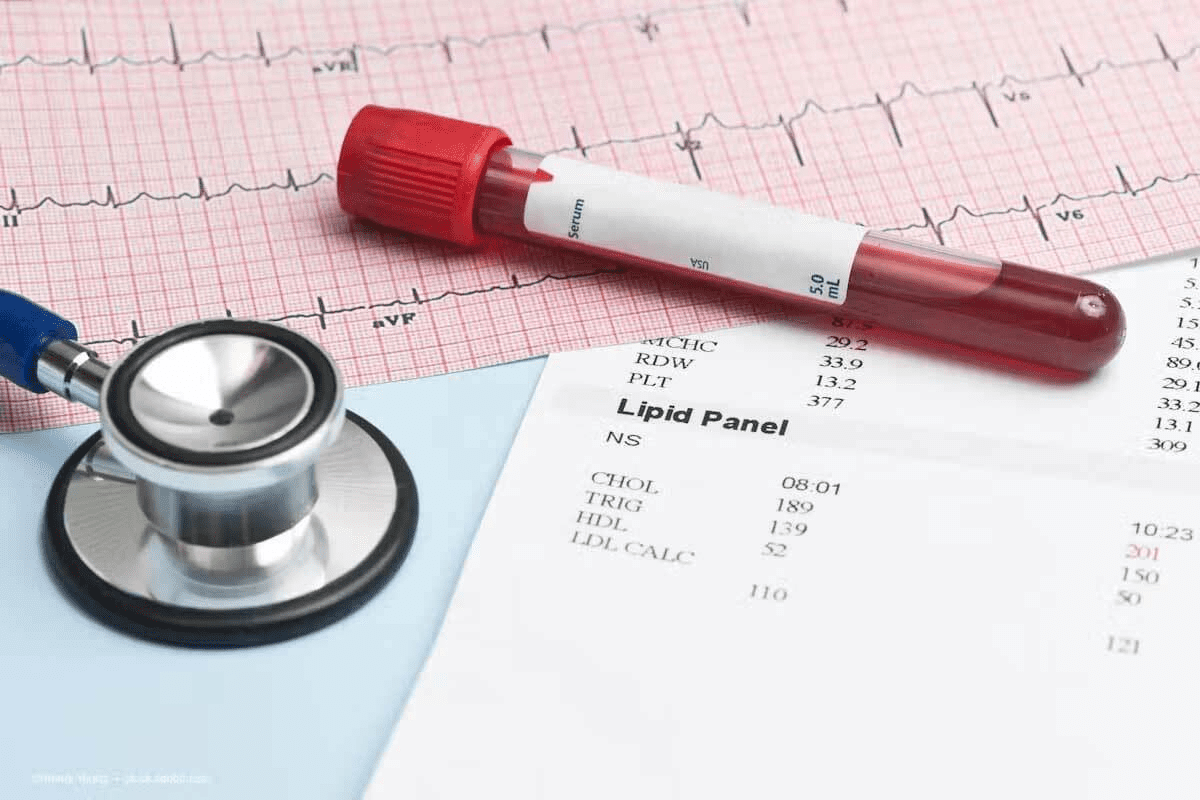Last Updated on November 27, 2025 by Bilal Hasdemir

CAR T cell therapy has changed cancer treatment by making a patient’s T cells attack cancer more aggressively. At Liv Hospital, we aim to offer top-notch safety and care in immunotherapy.
This therapy has brought life-changing results but also serious side effects that need careful attention. We know how vital it is to grasp the risks of this new cancer treatment.
We strive to be among the best globally by using the latest in CAR T cell therapy. We will look at the seven key side effects of this treatment. This guide is for patients and their caregivers.
Key Takeaways
- CAR T cell therapy is a form of immunotherapy that modifies T cells to target cancer.
- Liv Hospital is committed to providing world-class safety and patient-focused innovation.
- Understanding the possible risks and side effects is key for patients and caregivers.
- Expert care and vigilance are needed to handle serious side effects.
- Cutting-edge protocols are used to achieve the best outcomes in CAR T cell therapy.
What Is CAR T Cell Therapy and How Does It Work?
CAR T cell therapy is a new way to fight cancer. It changes a patient’s T cells to attack cancer cells better. This makes treatment more personal and effective.
The Science Behind CAR T Cell Immunotherapy
This therapy starts by taking a patient’s T cells. Then, it makes these T cells better at finding and killing cancer cells. This is done by adding a special gene to them.
This gene lets the T cells see and attack cancer cells. It’s like a superpower for the immune system. This helps the body fight cancer more strongly.
FDA-Approved CAR T Cell Treatments
Some CAR T cell therapies are approved by the FDA. They are used to treat certain blood cancers. Here are a few examples:
| Therapy Name | Target Cancer | FDA Approval Year |
|---|---|---|
| Tisagenlecleucel | Acute Lymphoblastic Leukemia (ALL) | 2017 |
| Axicabtagene ciloleucel | Diffuse Large B-Cell Lymphoma (DLBCL) | 2017 |
| Brexucabtagene autoleucel | Mantle Cell Lymphoma | 2020 |
The CAR T Cell Infusion Process
The process of CAR T cell therapy includes several steps. First, T cells are taken from the patient. Then, they are changed to better fight cancer. After that, they are put back into the patient.
During and after this, patients are watched closely. This is to make sure they don’t have any bad reactions.
“CAR T cell therapy has revolutionized the treatment of certain blood cancers, giving new hope to patients who have not responded to other treatments.”
Knowing how CAR T cell therapy works can help patients. It helps them understand their treatment options better.
Overview of Major CAR T Cell Side Effects
CAR T cell therapy has changed how we treat some cancers. But, it comes with its own set of challenges, including side effects. It’s important to know what these side effects are, how often they happen, and when they might occur.
Why Side Effects Occur
Side effects from CAR T cell therapy usually come from an overactive immune system. When CAR T cells are introduced, they trigger a strong immune response. This is because the body’s immune system is working hard to fight cancer cells. But, this strong response can also cause various side effects, some of which can be serious.
Frequency and Severity Statistics
About 70-90% of patients get cytokine release syndrome (CRS), a fast inflammatory reaction. CRS can be mild or very serious. Other side effects, like neurological problems and blood issues, also happen a lot.
Timeline of Side Effect Occurrence
Knowing when side effects will happen is key to managing them. CRS usually starts within a few days to a week after treatment. Neurological side effects can happen in the first few weeks. Knowing this helps doctors keep a close eye on patients during this time.
By understanding why, how often, and when side effects happen, we can manage them better. This helps improve how well patients do after CAR T cell therapy. It’s important to have good ways to handle these side effects to reduce risks.
Cytokine Release Syndrome (CRS): The Primary Concern
Cytokine Release Syndrome (CRS) is a serious condition that can happen after CAR T cell therapy. It happens when the body’s immune system overreacts, causing inflammation. This is because the CAR T cells are very good at killing cancer cells, but they can also harm the body.
About 70-90% of patients get CRS after CAR T cell therapy. The severity of CRS can vary a lot. It’s important to know the signs and symptoms early to manage it well.
Recognizing CRS Symptoms
Symptoms of CRS include fever, tiredness, nausea, headache, and muscle pain. In severe cases, it can cause low blood pressure, lack of oxygen, and organ failure. Spotting these symptoms early is key to getting the right treatment.
- Fever: Often the first sign of CRS
- Fatigue: Patients may experience extreme tiredness
- Nausea and Vomiting: Can lead to dehydration if not managed properly
- Headache and Muscle Pain: Common complaints among patients experiencing CRS
Grading System for CRS Severity
CRS is graded from 1 to 4, with Grade 1 being mild and Grade 4 being life-threatening. This helps doctors know how to treat it.
| Grade | Symptoms |
|---|---|
| 1 | Mild symptoms, not requiring intervention |
| 2-3 | Moderate to severe symptoms, requiring hospitalization and treatment |
| 4 | Life-threatening symptoms, requiring intensive care |
Standard Treatment Protocols
Tocilizumab, an antibody that blocks IL-6 receptors, is used to treat CRS. Corticosteroids may be added for more severe cases. It’s also important to give supportive care, like fluids and managing symptoms.
It’s very important to treat CRS early to avoid serious problems. Knowing the risks and symptoms helps doctors give better care to patients with CAR T cell therapy.
Neurological Toxicities (ICANS): Brain and Nervous System Effects
ICANS, or Immune Effector Cell-Associated Neurotoxicity Syndrome, is a serious side effect of CAR T cell treatment. This treatment is a breakthrough for many cancers. It’s important to know about its effects on the brain and nervous system for better care.
Common Neurological Symptoms
ICANS can cause a variety of brain and nervous system problems. These range from mild confusion and trouble speaking to severe issues like seizures and swelling in the brain. Finding these symptoms early is key to managing them well.
The symptoms of ICANS include:
- Difficulty with speech and language
- Confusion and disorientation
- Seizures
- Headache
- Tremors
Assessment Tools for ICANS
It’s vital to accurately and quickly check for ICANS. We use tools like the ICE score to measure how severe the symptoms are. This score helps us decide the best treatment.
| ICE Score | Severity Grade | Clinical Manifestations |
|---|---|---|
| 10-7 | Mild | Mild confusion, difficulty with tasks |
| 6-4 | Moderate | Moderate confusion, disorientation |
| 3-0 | Severe | Severe confusion, stupor, or coma |
Management Strategies
Managing ICANS requires a team effort. We focus on controlling symptoms and providing support. Corticosteroids are often used to reduce inflammation and symptoms. Sometimes, more treatments are needed for specific problems.
“Early recognition and management of ICANS are critical to lessen its effects on patients getting CAR T cell therapy.”
By knowing the risks and using effective treatments, we can improve care for CAR T cell therapy patients. This helps reduce the impact of ICANS on their treatment.
Hematologic Complications: Blood Count Abnormalities
CAR T cell therapy can cause blood count problems. Low blood cell counts, or cytopenias, are a common side effect.
Acute vs. Prolonged Cytopenias
Cytopenias can happen quickly or last a long time. Acute cytopenias happen right after the treatment. They are often caused by the chemotherapy before the CAR T cells.
Prolonged cytopenias can last for weeks or months. They happen after the treatment is over.
Monitoring Blood Counts After Treatment
It’s important to check blood counts after CAR T cell therapy. This helps find cytopenias early. It also lets doctors act fast.
They usually check white blood cell count, red blood cell count, and platelet count.
Interventions for Low Blood Counts
There are ways to help with low blood counts. Growth factor support helps make more blood cells. Blood transfusions replace missing blood cells. Sometimes, the treatment plan needs to change.
It’s key to understand and manage blood count problems after CAR T cell therapy. This helps patients get the best results.
Infection Susceptibility Following CAR T Cell Therapy
After CAR T cell therapy, patients often face a higher risk of infections. This is because the therapy weakens the immune system. It makes it harder for the body to fight off pathogens.
Types of Infections: Patients are at risk for many infections, like bacterial, viral, and fungal. These can be simple infections or more serious ones that take advantage of a weakened immune system.
Preventive Measures: Healthcare providers take steps to lower this risk. They use antibiotics, antiviral meds, and antifungal treatments. Patients might also get advice on how to avoid infections.
It’s important for patients to know the signs of infection that need quick medical help. These include fever, chills, cough, or any unusual symptoms. Reporting these symptoms early can greatly improve treatment outcomes.
Monitoring and Support: Close monitoring by healthcare providers is key during this time. Regular check-ups and follow-up care help catch infections early. This ensures patients get the support they need to recover well.
Managing CAR T Cell Side Effects: A Patient’s Guide
CAR T cell therapy is a breakthrough but comes with side effects. It’s key for patients to know how to handle these effects well.
Hospital Monitoring Period Requirements
After CAR T cell infusion, patients usually stay in the hospital. This lets doctors quickly spot and treat side effects.
The time in the hospital varies based on the patient and treatment. Most stay for 7 to 14 days after infusion.
Home Care Instructions
After leaving the hospital, patients must follow home care tips. These help ensure safety and recovery. Some instructions include:
- Watching temperature and telling doctors about fever
- Following medication schedules
- Going to follow-up appointments
- Staying away from sick people
One guide advises, “Drink lots of water and rest well during recovery.” Good home care is key to managing side effects.
When to Contact Your Healthcare Team
Patients should know when to call their doctors. Contact them right away if you have:
| Symptom | Examples |
|---|---|
| Fever | High temperature, chills |
| Neurological symptoms | Confusion, trouble speaking, seizures |
| Respiratory issues | Shortness of breath, trouble breathing |
By understanding hospital stays, home care, and when to call doctors, patients can manage side effects. This helps improve treatment results.
Metabolic Complications and Electrolyte Imbalances
After CAR T cell therapy, patients might face metabolic issues and electrolyte imbalances. These problems can happen because of the fast death of cancer cells, known as tumor lysis syndrome. Or they can be a direct result of the treatment.
Common Electrolyte Abnormalities
Electrolyte imbalances, like changes in potassium, phosphate, and calcium levels, are common after CAR T cell therapy. Monitoring these levels is key to avoid serious problems.
Tumor Lysis Syndrome Risk
Tumor lysis syndrome is a serious condition that can happen when many cancer cells die quickly. We use medicines to lower uric acid levels to prevent this risk.
Dietary Considerations During Recovery
Diet is very important in managing metabolic issues. Patients are told to follow a specific diet to keep electrolyte balance and aid in recovery. “A well-balanced diet is essential for patients going through CAR T cell therapy,”
By knowing the risks and taking early action, we can lessen the effects of metabolic complications and electrolyte imbalances. This ensures the best results for our patients.
Infusion-Related Reactions and Allergic Responses
Infusion-related reactions can happen with CAR T cell therapy. These reactions occur during or right after the CAR T cells are infused.
Symptoms During and After Infusion
Symptoms can be mild or severe. They include fever, chills, nausea, and in serious cases, anaphylaxis. Monitoring during infusion is key to spot and handle any bad reactions fast.
Pre-Medication Protocols
To lower the risk of infusion-related reactions, pre-medication protocols are used. These may include anti-histamines and corticosteroids to help prevent allergic reactions.
Emergency Management of Severe Reactions
For severe reactions, emergency plans are in place. This includes having emergency medications ready and a clear plan for severe infusion-related reactions.
Understanding the risks and taking steps ahead can help. Healthcare providers can lessen the impact of infusion-related reactions. This ensures the best results for patients getting CAR T cell therapy.
Long-Term and Rare CAR T Cell Side Effects
As CAR T cell therapy grows, knowing its long-term and rare side effects is key for good care. This treatment has shown great promise but comes with possible complications.
B-Cell Aplasia and Immunoglobulin Replacement
One side effect of CAR T cell therapy is B-cell aplasia, where B cells are greatly reduced. This can cause a lack of immunoglobulins, making patients more likely to get infections. To help, some patients might need immunoglobulin replacement therapy.
| Condition | Potential Complication | Management Strategy |
|---|---|---|
| B-Cell Aplasia | Immunoglobulin Deficiency | Immunoglobulin Replacement Therapy |
| Secondary Malignancy | New Cancer Development | Regular Monitoring and Screening |
Secondary Malignancy Risks
CAR T cell therapy might increase the risk of secondary malignancies, like leukemia or lymphoma. Though rare, this is a big concern for patients and doctors.
Ongoing Research on Late Effects
Research is ongoing to understand and lessen the long-term and rare side effects of CAR T cell therapy. Studies aim to find out who is at risk for secondary malignancies and how to best manage B-cell aplasia and other issues.
Conclusion: Weighing the Benefits Against CAR T Cell Side Effects
When thinking about CAR T cell therapy for tough cancers, we must weigh the good against the bad. This treatment has shown great promise for some blood cancers, giving hope to those who’ve tried everything else.
But, CAR T cell therapy can also have serious side effects. These can include cytokine release syndrome, neurological issues, and problems with blood cells. It’s key for patients to know about these side effects to make smart choices.
Looking at the benefits and risks, it’s clear that choosing the right patients is vital. They need to be well-informed and supported. This way, patients and doctors can work together to get the best results.
In the end, deciding on CAR T cell therapy should be a well-thought-out choice. It’s about understanding both the good and the bad it can do. With the right care and support, patients can face the challenges of CAR T cell therapy and find success.
FAQ
What is CAR T cell therapy?
CAR T cell therapy is a treatment that uses the body’s immune system to fight cancer. It starts by taking T cells from the blood. Then, these cells are changed to find and attack cancer cells. After that, they are put back into the body.
What are the benefits of CAR T cell therapy?
This therapy has shown great promise in treating blood cancers. It offers patients a chance at life with high success rates.
What are the major side effects of CAR T cell therapy?
Side effects include cytokine release syndrome (CRS), neurological issues (ICANS), and problems with blood. There’s also a risk of infections, metabolic issues, and reactions during infusion.
What is cytokine release syndrome (CRS), and how is it managed?
CRS is a serious side effect caused by cytokines in the blood. It’s managed by grading its severity. Treatment involves lowering cytokine levels and supportive care.
What are the neurological toxicities associated with CAR T cell therapy?
Neurological issues, or ICANS, can cause confusion, memory loss, and trouble with speech and movement. Tools are used to monitor and manage these effects.
How can I manage side effects at home after CAR T cell therapy?
Follow hospital instructions and watch for any signs of infection. Contact your healthcare team if you have concerns.
What is the risk of infections after CAR T cell therapy?
Immunosuppression increases the risk of infections. Preventive measures include antibiotics. Be aware of infection signs that need medical help.
What are the long-term side effects of CAR T cell therapy?
Long-term effects include B-cell aplasia and the need for immunoglobulin replacement. There’s also a risk of secondary cancers. Research aims to understand and reduce these risks.
How is CAR T cell infusion performed?
The infusion involves putting modified T cells back into the bloodstream. It’s done in a controlled setting to monitor for reactions.
What are the metabolic complications associated with CAR T cell therapy?
Metabolic issues include electrolyte imbalances and tumor lysis syndrome. Proper diet during recovery helps manage these risks.
Can CAR T cell therapy cause infusion-related reactions?
Yes, it can cause allergic reactions during infusion. Pre-medication and emergency plans are in place to reduce these risks.
How are hematologic complications managed after CAR T cell therapy?
Complications like cytopenias are managed by monitoring blood counts. Interventions include transfusions and growth factors to support blood cell production.
References
- American Cancer Society. CAR T‑cell Therapy. https://www.cancer.org/cancer/managing-cancer/treatment-types/immunotherapy/car-t-cell.html
- CINJ (Cancer Institute of New Jersey). Side Effects of CAR T‑Cell Therapy. https://cinj.org/patient-care/side-effects-car-t-cell-therapy
- JAMA Network Open. [Title of article]. https://jamanetwork.com/journals/jamanetworkopen/fullarticle/2830583
- PMC. [Article on CAR T‑cell therapy]. https://pmc.ncbi.nlm.nih.gov/articles/PMC12087935/








